Mybatis笔记
1、简介
1.1、什么是MyBatis

简介
什么是 MyBatis?
- MyBatis 是一款优秀的持久层框架。
- 它支持定制化 SQL、存储过程以及高级映射。
- MyBatis 避免了几乎所有的 JDBC 代码和手动设置参数以及获取结果集。
- MyBatis 可以使用简单的 XML 或注解来配置和映射原生类型、接口和 Java 的 POJO(Plain Old Java Objects,普通老式 Java 对象)为数据库中的记录。
如何获得MyBatis? - Maven仓库 - ```xml
1 |
|
新建项目 1. 新建一个普通的 maven 项目 2. 删除 src 目录 3. 导入maven依赖
1 | <?xml version="1.0" encoding="UTF-8"?> |
1 | <!--在build中配置resources,来防止我们资源导出失败的问题--> |
2.2、创建一个模块
编写 mybatis 的核心配置文件
1
2
3
4
5
6
7
8
9
10
11
12
13
14
15
16
17
18
19
20
21
22
23
24
<!--configuration核心配置文件-->
<configuration>
<!--environments配置环境组-->
<!--default默认环境-->
<environments default="development">
<!--environment单个环境-->
<environment id="development">
<!--transactionManager配置事务管理器-->
<transactionManager type="JDBC"/>
<!--配置连接池-->
<dataSource type="POOLED">
<property name="driver" value="com.mysql.jdbc.Driver"/>
<property name="url" value="jdbc:mysql://localhost:3306/mybatis?useSSL=true&useUnicode=true&characterEncoding=UFT-8"/>
<property name="username" value="root"/>
<property name="password" value="Cc105481"/>
</dataSource>
</environment>
</environments>
</configuration>编写 mybatis 工具类
1
2
3
4
5
6
7
8
9
10
11
12
13
14
15
16
17
18
19
20
21
22
23
24
25
26
27
28
29
30
31package com.rui.utils;
import org.apache.ibatis.io.Resources;
import org.apache.ibatis.session.SqlSession;
import org.apache.ibatis.session.SqlSessionFactory;
import org.apache.ibatis.session.SqlSessionFactoryBuilder;
import java.io.IOException;
import java.io.InputStream;
//sqlSessionFactory--->SessionFactory
public class MyBatisUtils {
private static SqlSessionFactory sqlSessionFactory;
static {
try{
//使用mybatis第一步、获取sqlSessionFactory对象
String resource = "mybatis-config.xml";
InputStream inputStream = Resources.getResourceAsStream(resource);
sqlSessionFactory = new SqlSessionFactoryBuilder().build(inputStream);
}catch(IOException e) {
e.printStackTrace();
}
}
//既然有了 SqlSessionFactory,顾名思义,我们就可以从中获得 SqlSession 的实例了。
// SqlSession 完全包含了面向数据库执行 SQL 命令所需的所有方法。
// 你可以通过 SqlSession 实例来直接执行已映射的 SQL 语句。
public static SqlSession getSqlSession(){
return sqlSessionFactory.openSession();
}
}
2.3、编写代码
实体类
1
2
3
4
5
6
7
8
9
10
11
12
13
14
15
16
17
18
19
20
21
22
23
24
25
26
27
28
29
30
31
32
33
34
35
36
37
38
39
40
41
42
43
44
45
46
47
48
49package com.rui.pojo;
public class user {
private int id;
private String name;
private String pwd;
public user() {
}
public user(int id, String name, String pwd) {
this.id = id;
this.name = name;
this.pwd = pwd;
}
public int getId() {
return id;
}
public void setId(int id) {
this.id = id;
}
public String getName() {
return name;
}
public void setName(String name) {
this.name = name;
}
public String getPwd() {
return pwd;
}
public void setPwd(String pwd) {
this.pwd = pwd;
}
public String toString() {
return "user{" +
"id=" + id +
", name='" + name + '\'' +
", pwd='" + pwd + '\'' +
'}';
}
}Dao接口
1
2
3
4
5
6
7
8
9
10package com.rui.dao;
import com.rui.pojo.User;
import java.util.List;
public interface UserDao {
List<User> getUserList();
}接口实现类由原来的UserImpl转变为一个Mapper配置文件
1
2
3
4
5
6
7
8
9
10
11
12
<!--namespace=绑定一个对应的mapper接口-->
<mapper namespace="com.rui.dao.UserDao">
<!--select查询语句-->
<select id="getUserList" resultType="com.rui.pojo.User">
/*定义sql*/
select * from mybatis.user
</select>
</mapper>
2.4、测试
注意点:
org.apache.ibatis.binding.BindingException: Type interface com.rui.dao.UserDao is not known to the MapperRegistry.
MapperRegistry 是什么? 核心配置文件中注册 mappers
junit测试
1
2
3
4
5
6
7
8
9
10
11
12
13
14
15
16
17
18
19
20
21
22
23
24
25
26package com.rui;
import com.rui.dao.UserDao;
import com.rui.pojo.User;
import com.rui.utils.MyBatisUtils;
import org.apache.ibatis.session.SqlSession;
import org.junit.Test;
import java.util.List;
public class UserDaoTest {
public void test(){
//第一步:获得SqlSession对象
SqlSession sqlSession = MyBatisUtils.getSqlSession();
//执行SQL
UserDao mapper = sqlSession.getMapper(UserDao.class);
List<User> userList = mapper.getUserList();
for (User user : userList) {
System.out.println(user);
}
//关闭SqlSession
sqlSession.close();
}
}可能会遇到的问题:
- 配置文件没有注册
- 绑定接口错误
- 方法名不对
- 返回类型不对
- Maven导出资源问题
3、CRUD
1、namespace
namespace 中的包名要和 Dao/mapper 接口的包名保持一致
2、select
选择查询语句; - id:就是对应的namespace中的方法名; - resultType:Sql语句执行的返回值! - parameterType:参数类型! 1. 编写接口
1 | package com.rui.dao; |
编写对应的mapper中的sql语句
1
2
3
4<select id="getUserById" resultType="com.rui.pojo.User" parameterType="int">
/*定义sql*/
select * from mybatis.user where id = #{id};
</select>测试
1
2
3
4
5
6
7
8
public void getUserById(){
SqlSession sqlSession = MyBatisUtils.getSqlSession();
UserMapper mapper = sqlSession.getMapper(UserMapper.class);
User user = mapper.getUserById(1);
System.out.println(user);
sqlSession.close();
}
3、Insert
4、Update
5、Delete
注意点:增删改需要提交事务 ## 6、分析错误 - 标签不要匹配错误 - resource 绑定 mapper,需要使用路径! - 程序配置文件必须符合规范 - NullPointerException,没有注册到资源 - 输出的 xml 文件中存在中文乱码问题 - maven 资源没有导出问题
7、万能Map
假设,我们的实体类,或者数据库中的表,字段或者参数过多,我们应当考虑使用Map!
1 | //万能Map |
1 | <!--对象中的属性,可以直接取出来 parameterType=传递map中的key--> |
1 | //万能map |
Map传递参数,直接在sql中取出key即可!【parameterType="map"】 对象传递参数,直接在sql中取对象的属性即可!【parameterType="Object"】 只有一个基本类型参数的情况下,可以直接在sql中取到! 多个参数用Map,或者注解!
8、思考
模糊查询怎么写? 1. Java代码执行的时候传递通配符 %%
1 | List<User> userList=mapper.getUserLike("%李%"); |
- 在 sql 拼接中使用通配符!
1
select * from mybatis.user where name like "%"#{value}"%"
4、配置解析
1、核心配置文件
- mybatis-config.xml
- MyBatis的配置文件包含了会深深影响MyBatis行为的设置和属性信息
1
2
3
4
5
6
7
8
9
10
11
12
13configuration(配置)
properties(属性)
settings(设置)
typeAliases(类型别名)
typeHandlers(类型处理器)
objectFactory(对象工厂)
plugins(插件)
environments(环境配置)
environment(环境变量)
transactionManager(事务管理器)
dataSource(数据源)
databaseIdProvider(数据库厂商标识)
mappers(映射器)
2、环境配置(environments)
MyBatis 可以配置成适应多种环境 不过要记住:尽管可以配置多个环境,但每个 SqlSessionFactory 实例只能选择一种环境。 学会使用配置多套运行环境! MyBatis默认的事务管理器就是JDBC,连接池:POOLED ## 3、属性(properties) 我们可以通过properties属性来实现引用配置文件 这些属性都是可外部配置且可动态替换的,既可以在典型的 Java 属性文件中配置,亦可通过 properties 元素的子元素来传递。【db.properties】 编写一个配置文件 db.properties
1 | driver=com.mysql.jdbc.Driver |
在核心配置文件中引入
1 | <!--引入外部配置文件--> |
可以直接引入外部文件
可以在其中增加一些属性配置
如果两个文件有同一字段,优先使用外部配置文件的! ## 4、类型别名(typeAliases)
类型别名是为 Java 类型设置一个短的名字。
存在的意义仅在于用来减少类完全限定名的冗余。
1
2
3
4<!--可以给实体类起别名-->
<typeAliases>
<typeAlias type="com.rui.pojo.User" alias="User"/>
</typeAliases>也可以指定一个包名,MyBatis 会在包名下面搜索需要的 Java Bean,比如: 扫描实体类的包,他的默认别名就为这个类的类名,首字母小写!
1
2
3
4<!--可以给实体类起别名-->
<typeAliases>
<package name="com.rui.pojo"/>
</typeAliases>
在实体类比较少的时候,使用第一种方式。 如果实体类十分多,建议使用第二种方式。 第一种可以DIY别名,第二种则不行,如果非要改,需要在实体类(pojo)上增加@Alias注解
1 |
|
5、设置
这是 MyBatis 中极为重要的调整设置,它们会改变 MyBatis 的运行时行为。 
6、生命周期和作用域
生命周期,和作用域是至关重要的,因为错误的使用会导致非常严重的并发问题。
SqlSessionFactoryBuilder
- 一旦创建了SqlSessionFactory,就不再需要它了
- 局部变量
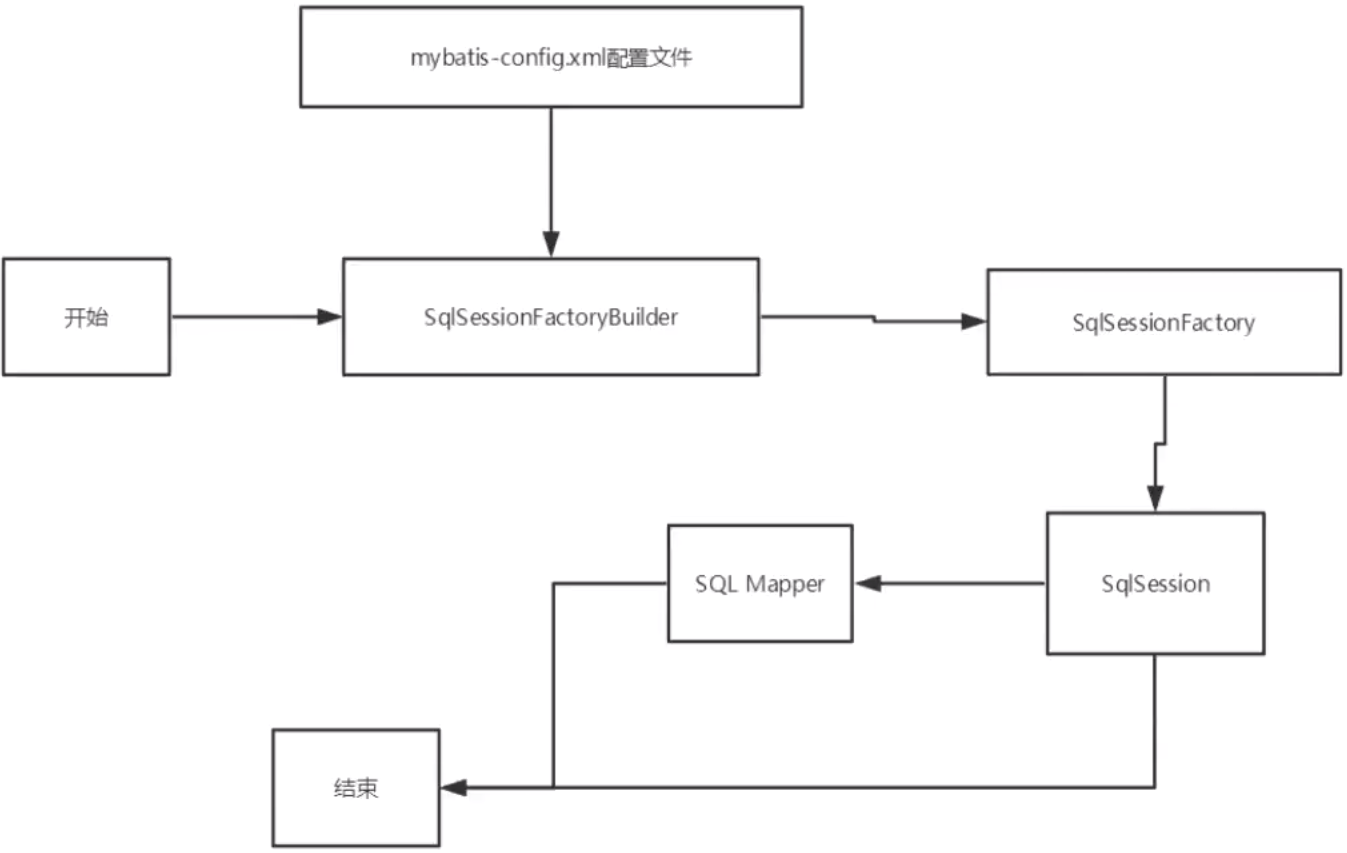
SqlSessionFactory:
- 可以想象为:数据库连接池
- SqlSessionFactory 一旦被创建就应该在应用的运行期间一直存在,没有任何理由丢弃它或重新创建另一个实例。
- 因此SqlSessionFactory的最佳作用域是应用作用域。
- 最简单的就是使用 单例模式 或者静态单例模式
SqlSession: - 连接到连接池的一个请求! - SqlSession 的实例不是线程安全的,因此是不能被共享的,所以它的最佳的作用域是请求或方法作用域。 - 用完之后需要赶紧关闭,否则会占用资源
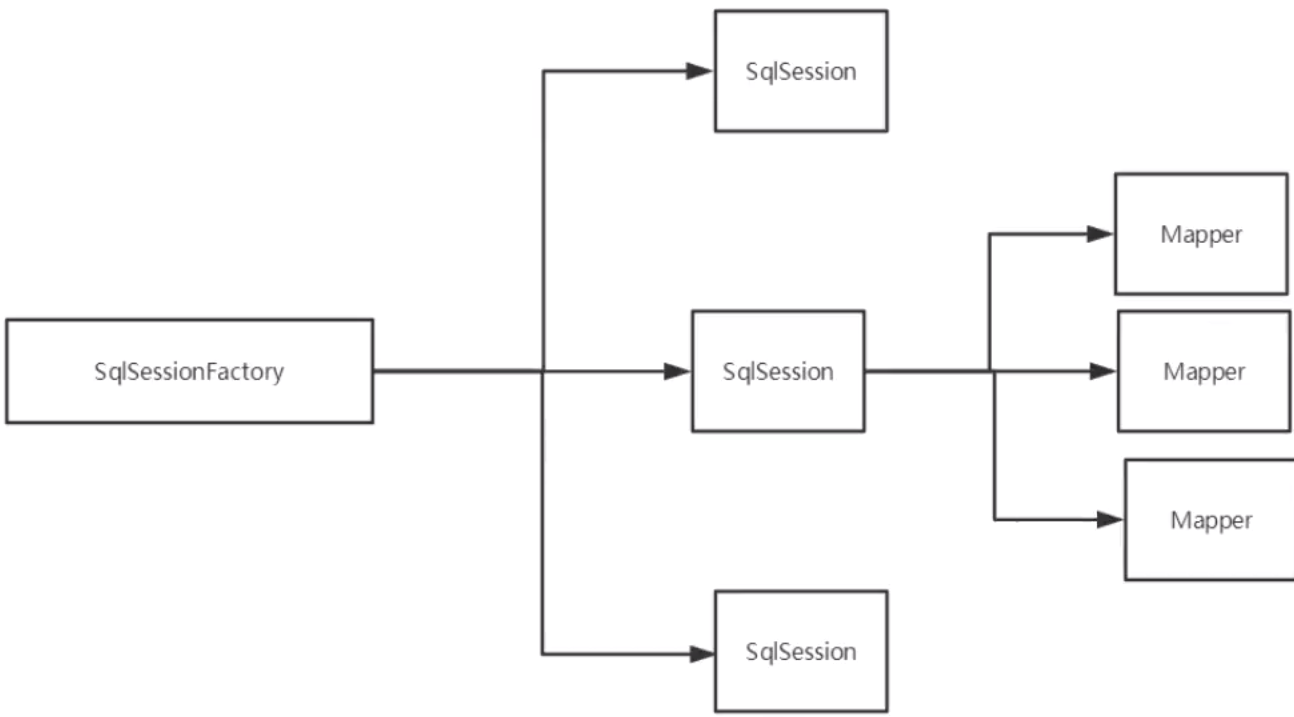
这里的每一个Mapper,就代表一个具体的业务!
5、解决属性名和字段名不一致的问题
1、问题
数据库中的字段
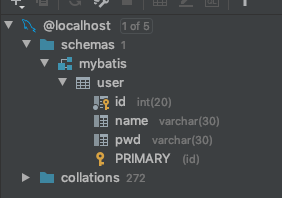
新建一个项目,拷贝之前的,测试实体类字段不一致的情况。
1 | public class User { |
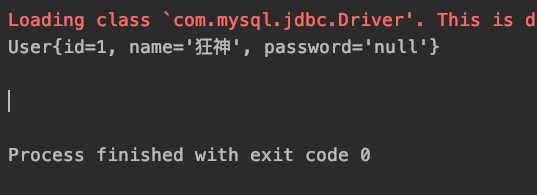
1 | //select * from mybatis.user where id = #{id} |
解决方法: - 起别名
1 | select id,name,pwd as password from mybatis.user where id = #{id} |
2、resultMap
结果集映射
1 | id name pwd |
1 | <!--结果集映射--> |
resultMap元素是 MyBatis 中最重要最强大的元素- ResultMap 的设计思想是,对于简单的语句根本不需要配置显式的结果映射,而对于复杂一点的语句只需要描述它们的关系就行了。
ResultMap最优秀的地方在于,虽然你已经对它相当了解了,但是根本就不需要显式地用到他们。
6、日志
6.1、日志工厂
如果一个数据库操作,出现了异常,我们需要排错。日志就是最好的助手! 曾经:sout、debug 现在:日志工厂 
- SLF4J
- LOG4J【掌握】
- LOG4J2
- JDK_LOGGING
- COMMONS_LOGGING
- STDOUT_LOGGING【掌握】
- NO_LOGGING
在Mybatis中具体使用那个日志实现,在设置中设定!
STDOUT_LOGGING标准日志输出
在mybatis核心配置文件中,配置我们的日志!
1 | <settings> |

6.2、Log4j
什么是log4j - Log4j 是 Apache 的一个开源项目,通过使用 Log4j,我们可以控制日志信息输送的目的地是控制台、文件、GUI组件 - 我们也可以控制每一条日志的输出格式 - 通过定义每一条日志信息的级别,我们能够更加细致地控制日志的生成过程。 - 通过一个配置文件来灵活地进行配置,而不需要修改应用的代码。
1.先导入log4j的包
1 | <dependencies> |
2.log4j.properties
1 | log4j.rootLogger=debug, stdout, R |
3.配置log4j为日志实现
1 | <settings> |
4.log4j的使用!直接测试运行刚才的查询
1 | DEBUG [main] (LogFactory.java:105) - Logging initialized using 'class org.apache.ibatis.logging.log4j.Log4jImpl' adapter. |
简单使用 1. 在要使用Log4j 的类中,导入org.apache.log4j.Logger; 2. 日志对象,加载参数为当前类的class
1 | static Logger logger = Logger.getLogger(UserDaoTest.class); |
- 日志级别
1
2
3logger.info("info:进入了testLog4j方法");
logger.debug("debug:进入了testLog4j");
logger.error("error:进入了testLog4j");
7、分页
思考:为什么要分页? - 减少数据的处理量 ## 7.1、使用Limit分页
1 | select * from user limit startIndex,pageSize |
1 | //分页 |
1 | <!--分页--> |
1 |
|
1 | List<User> getUserByRowBounds(); |
mapper.xml
1
2
3
4<!--分页2-->
<select id="getUserByRowBounds" resultMap="UserMap">
select * from mybatis.user
</select>测试
1
2
3
4
5
6
7
8
9
10
11
12
13
14
public void getUserByRowBounds(){
SqlSession sqlSession = MyBatisUtils.getSqlSession();
//RowBounds实现
RowBounds rowBounds = new RowBounds(1, 2);
//通过java代码层面实现分页
List<User> userList = sqlSession.selectList("com.rui.dao.UserMapper.getUserByRowBounds",null,rowBounds);
for (User user : userList) {
System.out.println(user);
}
sqlSession.close();
}
7.3、分页插件
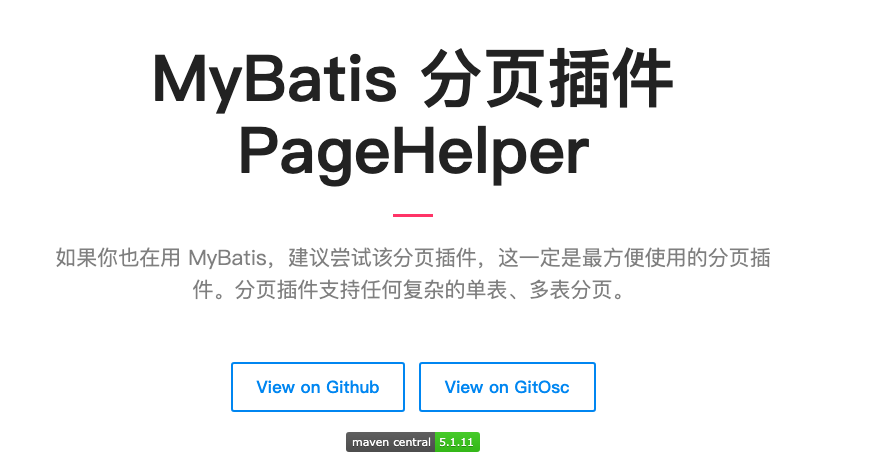
8、使用注解开发
8.1、面向接口编程
面向接口编程的根本原因:解耦,可拓展,提高复用,分层开发中、上层不用管具体的实现,大家都遵守共同的标准,使得开发变得容易,规范性好
8.2、使用注解开发
注解在接口上实现
1
2
List<User> getUsers();需要在核心配置文件中绑定接口!
1
2
3
4<!--绑定接口-->
<mappers>
<mapper class="rui.dao.UserMapper"/>
</mappers>测试
1 | public class UserMapperTest { |
本质:反射机制实现 底层:动态代理! ## 8.3、CRUD 我们可以在工具类创建的时候实现自动提交事务!
1 | public static SqlSession getSqlSession(){ |
编写接口,增加注解
1 | public interface UserMapper { |
测试类 【注意:我们必须要将接口注册绑定到我们的核心配置文件中!】
关于@Param()注解 - 基本类型的参数或者String类型,需要加上 - 引用类型不需要加 - 如果只有一个基本类型的话,可以忽略,但是建议大家都加上 - 我们在SQL中引用的就是我们这里的@Param()中设定的属性名
#{} ${}区别
9、Lombok
1 | Project Lombok is a java library that automatically plugs into your editor and build tools, spicing up your java. |
使用步骤: 1. 在IDEA中安装Lombok插件 2. 在项目中导入lombok的jar包
1 | <!-- https://mvnrepository.com/artifact/org.projectlombok/lombok --> |
在实体类上加注解即可
1
2
3
4
5
6
7
8
9
10
11
12
13
14
15
16
17
18
19
20
21and
, and
, , , , , , , ,
experimental
Lombok config system
说明:
1 | :无参构造,get、set、toSring、hashcode、equals |
10、多对一处理
多对一: - 多个学生,对应一个老师 - 对于学生这边而言,关联...多个学生,关联一个老师【多对一】 - 对于老师而言,集合,一个老师又很多学生【一对多】
SQL:
1 | CREATE TABLE `teacher`( |
测试环境
- 导入lombok
- 新建实体类Teacher,Student
- 新建Mapper接口
- 建立Mapper.XML文件
- 在核心配置文件中绑定注册我们的MApper接口或者文件!【方式很多,随意选】
- 测试查询是否成功!
按照查询嵌套处理
1 | <!-- |
按照结果嵌套处理
1 | <!--按照结果嵌套处理--> |
回顾Mysql多对一查询方式: - 子查询 - 联表查询
11、一对多处理
比如:一个老师拥有多个学生! 对于老师而言,就是一对多的关系! ## 环境搭建 1. 环境搭建,和刚才一样
实体类
1 |
|
1 |
|
按照结果嵌套处理
1 | <!--按结果嵌套查询--> |
按照查询嵌套处理
1 | <select id="getTeacher2" resultMap="TeacherStudent2"> |
小节
- 关联-association【多对一】
- 集合-collection 【一对多】
- javaType & ofType
- JavaType用来指定实体类中属性的类型
- ofType用来指定映射到List或者集合中的pojo类型,泛型中的约束类型!
注意点: - 保证SQL的可读性,尽量保证通俗易懂 - 注意一对多和多对一中,属性名和字段的问题! - 如果问题不好排查错误,可以使用日志,建议使用Log4j
慢SQL 1S 1000S
面试高频 - Mysql引擎 - InnoDB底层原理 - 索引 - 索引优化!
12、动态SQL
什么事动态SQL:动态SQL就是指根据不同的条件生成不同的SQL语句 利用动态SQL这一特性可以彻底摆脱这种痛苦 动态 SQL 元素和 JSTL 或基于类似 XML 的文本处理器相似。在 MyBatis 之前的版本中,有很多元素需要花时间了解。MyBatis 3 大大精简了元素种类,现在只需学习原来一半的元素便可。MyBatis 采用功能强大的基于 OGNL 的表达式来淘汰其它大部分元素。 - if - choose (when, otherwise) - trim (where, set) - foreach
搭建环境
1 | CREATE TABLE `bolg`( |
创建一个基础工程 1. 导包 2. 编写配置文件 3. 编写实体类
1 |
|
- 编写实体类对应的Mapper接口和Mapper.xml ## IF
1
2
3
4
5
6
7
8
9<select id="queryBlogIF" parameterType="map" resultType="com.rui.pojo.Blog">
select * from mybatis.bolg where 1=1
<if test="title != null">
and title = #{title}
</if>
<if test="author != null">
and author = #{author}
</if>
</select>
1 |
|
choose (when, otherwise)
1 | <select id="queryBlogChoose" parameterType="map" resultType="com.rui.pojo.Blog"> |
trim, (where, set)
1 | select * from mybatis.bolg |
1 | <update id="updateBlog" parameterType="map"> |
所谓的动态SQL,本质还是SQL语句,只是我们可以在SQL层面,去执行一些逻辑代码 if Where,set,choose,when ## SQL片段 有的时候,我们可能会将一些公共的部分抽取出来,方便复用! 1. 使用SQL标签抽取公共的部分
1 | <sql id="if-title-author"> |
在需要使用的地方使用Include标签引用即可
1
2
3
4
5
6<select id="queryBlogIF" parameterType="map" resultType="com.rui.pojo.Blog">
select * from mybatis.bolg
<where>
<include refid="if-title-author"></include>
</where>
</select>注意事项:
- 最好基于单表来定义SQL片段!
- 不要存在where或者set标签,片段里尽量只有if就好了
Foreach
1
2
3
4
5
6
7select * from user where 1=1 and
<foreach item="id" index="index" collection="ids"
open="(" separator="or" close=")">
#{id}
</foreach>
(id=1 or id=2 or id=3)
1
2
3
4
5
6
7
8
9
10
11
12
13
14<!--
select * from mybatis.bolg where 1=1 and (id=1 or id=2 or id=3)
我们现在传递一个万能的map,这个map中可以存在一个map
-->
<select id="queryBlogForeach" parameterType="map" resultType="com.rui.pojo.Blog">
select * from mybatis.bolg
<where>
<foreach collection="ids" item="id" open="(" close=")" separator="or">
id = #{id}
</foreach>
</where>
</select>动态SQL就是在拼接SQL语句,我们只要保证SQL的正确性,按照SQL的格式,去排列组合就可以了
建议:
- 先在Mysql中写出完整的SQL,在对应的去修改称为我们的动态SQL
13、缓存
13.1、简介
1 | 查询 : 连接数据库,耗资源! |
- 什么是缓存[Cache]?
- 存在内存中的临时数据。
- 将用户经常查询的数据放在缓存(内存)中,用户去查询数据就不用从磁盘上(关系型数据库数据文件)查询, 从缓存中查询,从而提高查询效率,解决了高并发系统的性能问题。
- 为什么使用缓存?
- 减少和数据库的交互次数,减少系统开销,提高系统效率。
- 什么样的数据能使用缓存?
- 经常查询并且不经常改变的数据。
13.2、Mybatis缓存
- MyBatis包含一个非常强大的查询缓存特性,它可以非常方便地定制和配置缓存。缓存可以极大的提升查询效率。
- MyBatis系统中默认定义了两级缓存:一级缓存和二级缓存
- 默认情况下,只有一级缓存开启。(SqlSession级别的缓存,也称为本地缓存)
- 二级缓存需要手动开启和配置,他是基于namespace级别的缓存。
- 为了提扩展性,MyBatis定义了缓存接口Cache。我们可以通过实现Cache接口来自定义二级缓存
13.3、一级缓存
- 一级缓存也叫本地缓存:SqlSession
- 与数据库同义词会话期间查询到的数据会放在本地缓存中。
- 以后如果需要获取相同的数据,直接从缓存中拿,没有必要再去查询数据;
测试步骤: 1. 开启日志! 2. 测试在一个Session中查询两次相同的记录 3. 查看日志输出
缓存失效的情况: 1. 查询不同的东西 2. 增删改操作,可能会改变原来的数据,所以必定会刷新缓存! 3. 查询不同的Mapper.xml 4. 手动清理缓存!
1 | sqlsession.clearCache(); //手动清理缓存 |
小节:一级缓存默认是开启的,只在一次SqlSession中有效,也就是拿到连接到关闭连接这个区间段!
一级缓存就是一个Map。 ## 13.4、二级缓存 - 二级缓存也叫全局缓存,一级缓存作用域太低了,所以诞生了二级缓存 - 基于namespace级别的缓存,一个名称空间,对应一个二级缓存; - 工作机制 - 一个会话查询一条数据,这个数据就会被放在当前会话的一级缓存中; - 如果当前会话关闭了,这个会话对应的一级缓存就没了;但是我们想要的是,会话关闭了,一级缓存中的数据会被保存到二级缓存中; - 新的会话查询信息,就可以从二级缓存中获取内容; - 不同的mapper查出的数据会放在自己对应的缓存(map)中;
步骤: 1. 开启全局缓存
1 | <!--显式的开启全局缓存--> |
在要使用二级缓存的Mapper中开启
1
2
3
4
5
6
7<!--在当前Mapper.xml中使用二级缓存-->
<cache/>
也可以自定义参数
<cache eviction="FIFO"
flushInterval="60000"
size="512"
readOnly="true"/>测试
问题:我们需要将实体类序列化!否则就会报错
1
java.io.NotSerializableException: com.rui.pojo.User
小结: - 只要开启了二级缓存,在同一个Mapper下就有效 - 所有的数据都会先放在一级缓存中; - 只有当会话提交,或者关闭的时候,才会提交到二级缓存中!
13.5、缓存原理
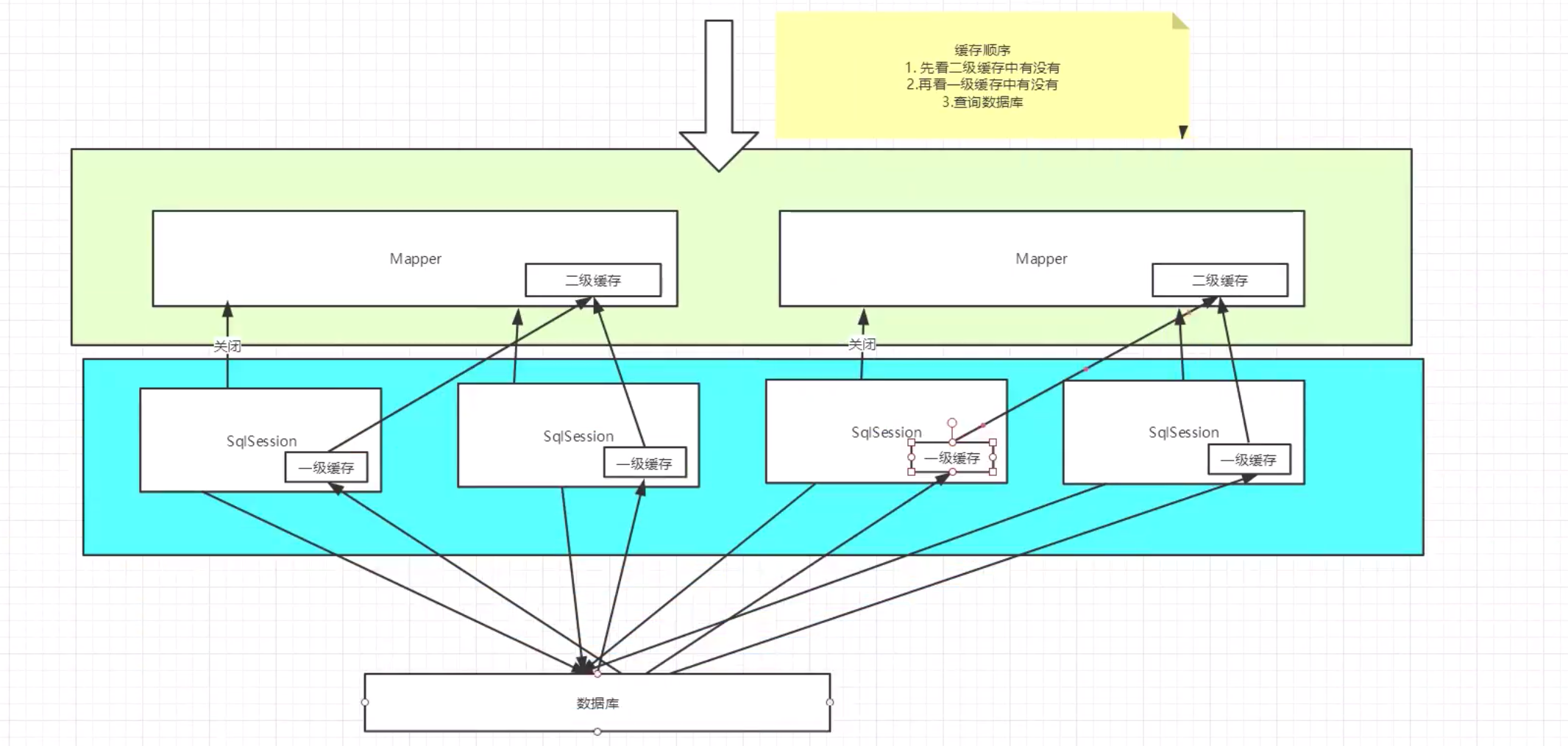
13.6、自定义缓存-encache
1 | EhCache 是一个纯Java的进程内缓存框架,具有快速、精干等特点,是Hibernate中默认的CacheProvider。 |
要在程序中使用ehcache,先要导包!
1 | <!-- https://mvnrepository.com/artifact/org.mybatis.caches/mybatis-ehcache --> |
然后在mapper中指定使用ehcache缓存实现
1 | <!--在当前Mapper.xml中使用二级缓存--> |
导入配置文件 ehcache.xml
1 |
|